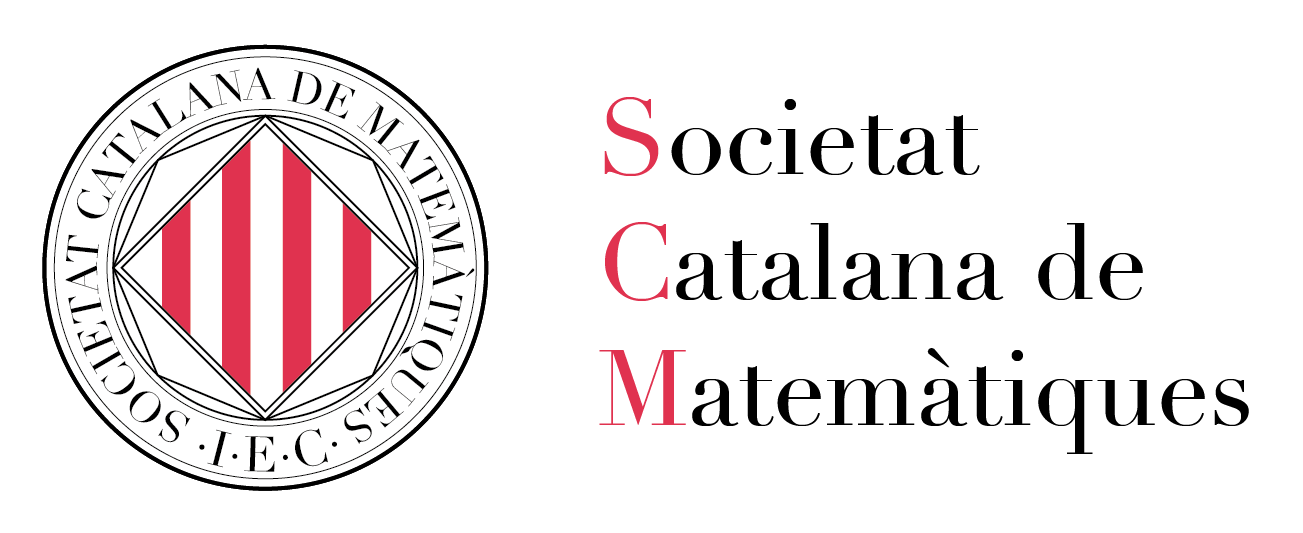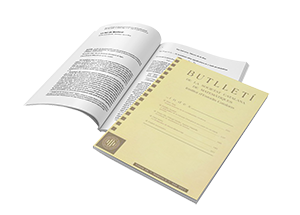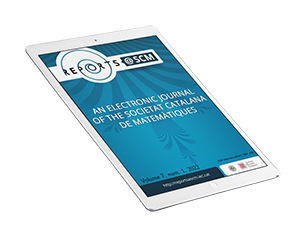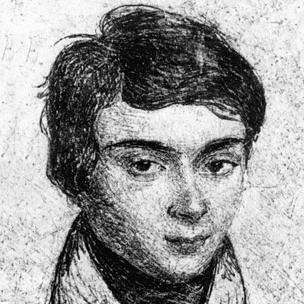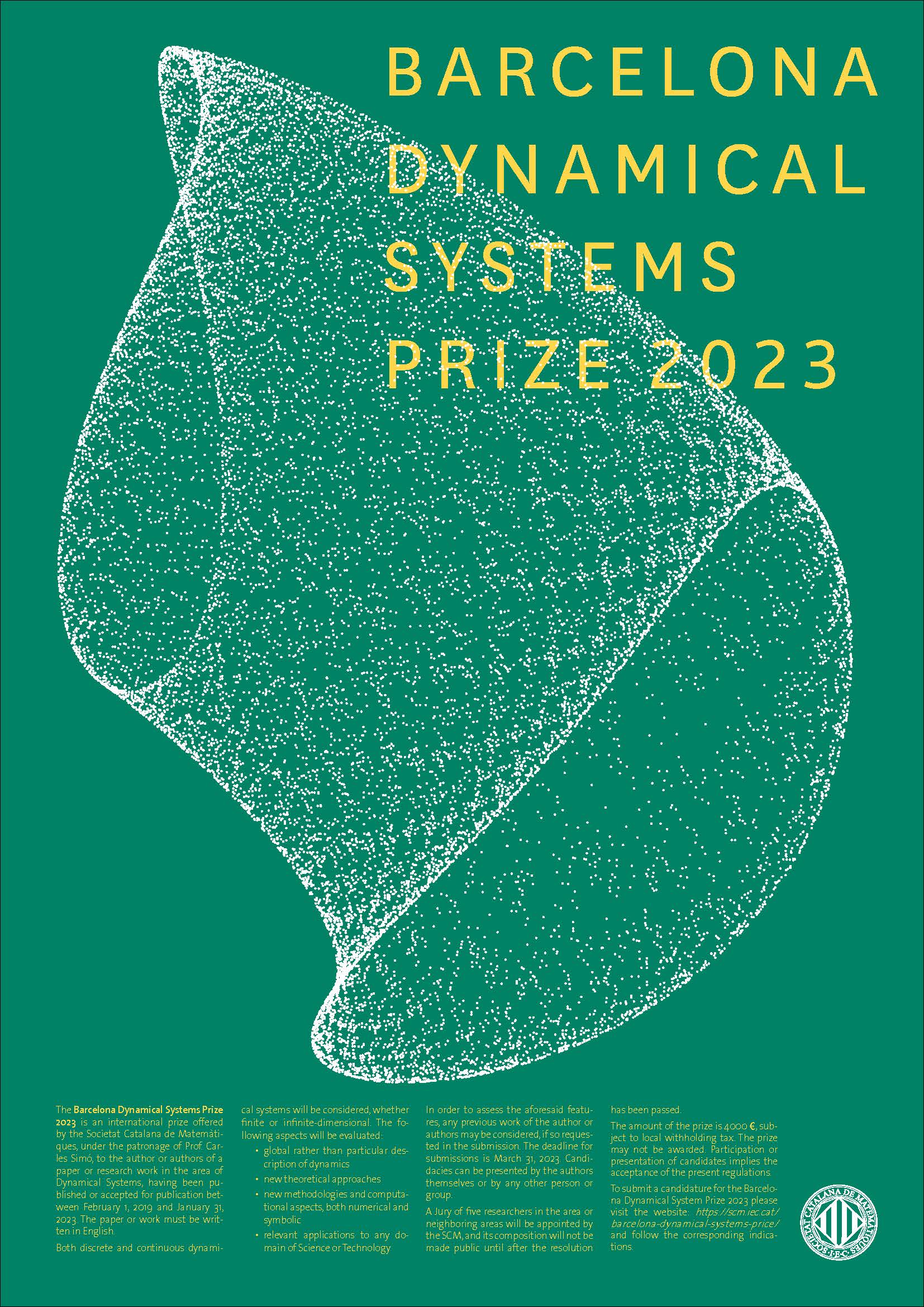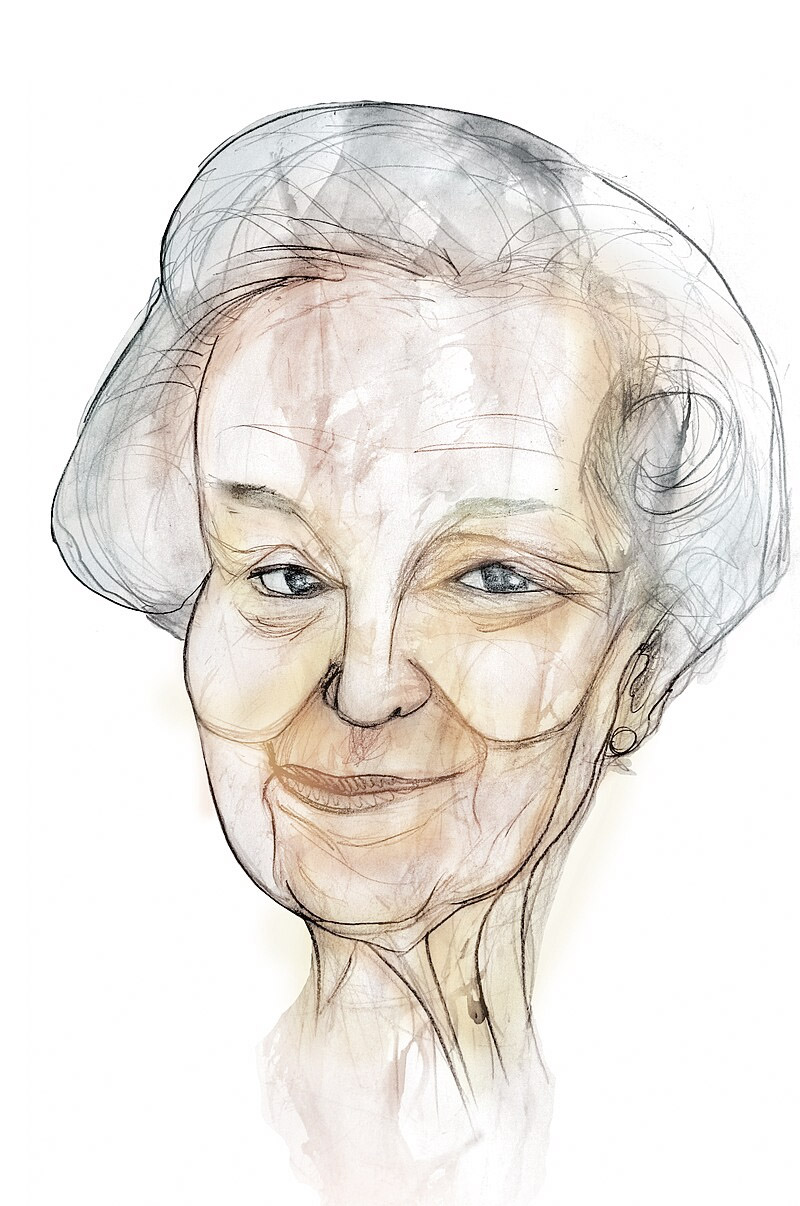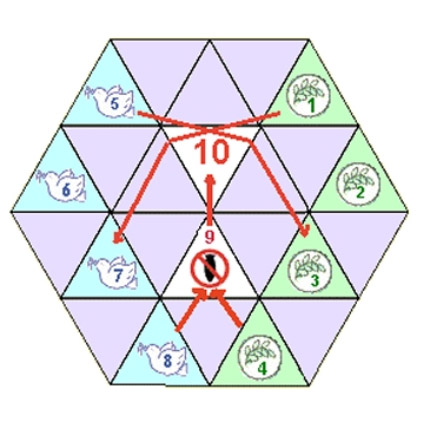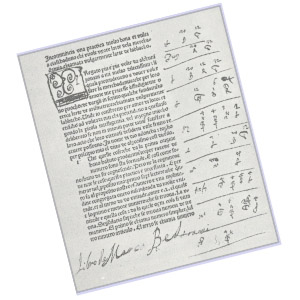Hem convidat la comunitat investigadora a mostrar resultats de recerca no inclosos en les ponències i sessions programades, en format pòster. Donem així un valor afegit a les pauses, afavorint l’intercanvi d’idees i les discussions matemàtiques. En especial, pels joves, és una oportunitat per mostrar la seva recerca.
List of accepted posters
- A new method to find the spectrum and eigenspaces of the k-token of a cycle
Cristina Dalfó (UdL), Miquel Angel Fiol (UPC), Mónica A. Reyes (UdL), Arnau Messegué
- Jet transport for General Linear methods
Philip Pita Forrier (Universitat de Barcelona), Àngel Jorba (Universitat de Barcelona), Joan Gimeno (Universitat de Barcelona) - Symmetric Cartan calculus
Filip Moučka (Universitat Autònoma de Barcelona; Czech Technical University in Pragues); Roberto Rubio Nuñez (Universitat Autònoma de Barcelona) - Zeros of {-1, 0, 1} Power Series, Connectedness Loci and Peephole Sets
Bernat Espigulé (PhD student at Universitat de Girona), PhD supervisors: Joan Saldaña and David Juher (Differential Equations, Modelling and Applications Group, IMAE, Universitat de Girona). - Castelnuovo-Mumford regularity of projective monomial curves via sumsets
Philippe Gimenez (Universidad de Valladolid); Mario González-Sánchez (Universidad de Valladolid) - Atlas of wandering domains for a Newton family
Robert Florido, Núria Fagella (Universitat de Barcelona) - On the number of monochromatic solutions to multiplicative equations
Lucas Aragão (IMPA), Jonathan Chapman (University of Bristol), Miquel Ortega (Universitat Politècnica de Catalunya), Victor Souza (University of Cambridge) - Parabolic ejection and collision orbits for the restricted planar circular 3-body problem.
Marcel Guàrdia, José Lamas Rodríguez, Tere M-Seara (Universitat Politècnica de Catalunya)
- Splitting of separatrices in generalized standard maps.
Inmaculada Baldomà Barraca (UPC), (UPC) Dídac Gil Rams (CRM and UPC), and Pau Martín de la Torre (UPC).
Poster submission
Fill in this form with your data and send an abstract to scm.bmd@correu.iec.cat.
You will hear back about acceptance as soon as possible.
List of abstracts
A new method to find the spectrum and eigenspaces of the k-token of a cycle
Cristina Dalfó (UdL), Miquel Angel Fiol (UPC), Mónica A. Reyes (UdL), Arnau Messegué
Abstract: The k-token graph F_k(G) of a graph G is the graph whose vertices are the k-subsets of vertices from G, two of which being adjacent whenever their symmetric difference is a pair of adjacent vertices in G. In this poster, we propose a general method to find the spectrum and eigenspaces of the k-token graph F_k(C_n) of a cycle C_n. The method is based on the theory of lift graphs and the recently introduced theory of over-lifts.
Jet transport for General Linear methods
Philip Pita Forrier (Universitat de Barcelona), Àngel Jorba (Universitat de Barcelona), Joan Gimeno (Universitat de Barcelona)
Abstract: In this project we study how the computational technique called “jet transport” can be applied to the family of numerical integrators known as General Linear methods (GLM), which are a natural generalization of the well-known Linear Multistep (LMM) and Runge-Kutta (RK) methods. Jet transport can be defined as the application of the arithmetic of truncated power series to a numerical integrator in order to obtain the solution of the variational equations (VE); that is, the linear differential equations that are satisfied by the derivatives of the solution of an initial value problem (IVP). In this context, we prove that: using a GLM the numerical integration of an IVP with jet transport is equivalent to the numerical integration of the VE, we derive the expressions that the higher order coefficients of the jets must satisfy to be a solution of an implicit system, allowing the implementation of implicit General Linear methods and we apply this implementation to study some scenarios in the field of dynamical systems, such as the computation of periodic orbits and the power expansion of Poincaré maps.
Symmetric Cartan calculus
Filip Moučka (Universitat Autònoma de Barcelona; Czech Technical University in Pragues); Roberto Rubio Nuñez (Universitat Autònoma de Barcelona)
Abstract: We introduce analogues of the exterior derivative, the Lie derivative, and the Lie bracket of vector fields, on the algebra of completely symmetric covariant tensor fields. Then we discuss the basic properties and geometrical interpretation of these objects. Using the correspondence between the Cartan calculus and its symmetric counterpart, we introduce a symmetric version of Poisson geometry and generalized geometry.
Zeros of {-1, 0, 1} Power Series, Connectedness Loci and Peephole Sets
Bernat Espigulé (PhD student at Universitat de Girona), PhD supervisors: Joan Saldaña and David Juher (Differential Equations, Modelling and Applications Group, IMAE, Universitat de Girona).
Abstract: In 1985, Barnsley and Harrington defined a Mandelbrot Set M identified with the set of zeros of {-1,0,1} power series in the unit disk. In this poster, we reveal the hidden internal structure of M using a novel technique. The result has applications in the geometry of algebraic numbers in the complex plane, their Diophantine approximation, and the study of connectedness properties of self-similar sets.
Castelnuovo-Mumford regularity of projective monomial curves via sumsets
Philippe Gimenez (Universidad de Valladolid); Mario González-Sánchez (Universidad de Valladolid)
Abstract: Given A={a_0,…,a_{n-1}} a finite set of n\geq 4 non-negative integers that we will assume to be in normal form, i.e., such that 0=a_0<a_1<…<a_{n-1}=d and relatively prime, the s-fold sumset of A is the set sA of integers obtained by collecting all the sums of $s$ elements in A. On the other hand, given an infinite field k, one can associate with A the projective monomial curve C_A parametrized by A: C_A={(v^d:u^{a_1}v^{d-a_1}: …u^{a_{n-2}}v^{d-a_{n-2}}:u^d)} where (u:v) covers the whole projective line over k. This allows us to establish a bridge between Additive Number Theory and Commutative Algebra and obtain some results connecting the Castelnuovo-Mumford regularity of C_A and the behaviour of the sumsets sA.
Atlas of wandering domains for a Newton family
Robert Florido, Núria Fagella (Universitat de Barcelona)
Abstract: Meromorphic maps naturally arise from Newton’s root-finding method applied to an entire function F. In the transcendental case, Newton’s method may particularly fail to converge to the roots of F if the initial condition lies in a Baker or wandering domain. Here we present the simplest one-parameter family of transcendental entire functions with zeros, whose Newton’s method yields wandering domains for an open set of parameters by means of the logarithmic lifting method for periodic Fatou components.
On the number of monochromatic solutions to multiplicative equations
Lucas Aragão (IMPA), Jonathan Chapman (University of Bristol), Miquel Ortega (Universitat Politècnica de Catalunya), Victor Souza (University of Cambridge)
Abstract: Given an r-colouring of the interval {2, …, N}, what is the minimum number of monochromatic solutions of the equation xy = z? We prove that it is at least C_r N^{1/S(r-1)}, where S(r) is the Schur number for r colours and C_r is a constant. For r \in {2,3,4}, this bound is sharp up to logarithmic factors. For 2-colourings, we establish a stability version of this result. We also obtain results for more general multiplicative equations of the form x_1^{a_1} … x_k^{a_k} = y, where a_1, …, a_k are positive integers, at least one of which equals 1.
Parabolic ejection and collision orbits for the restricted planar circular 3-body problem.
Marcel Guàrdia, José Lamas Rodríguez, Tere M-Seara (Universitat Politècnica de Catalunya)
Abstract: We consider the restricted planar circular three body problem (RPC3BP), which describes the motion of a massless body under the attraction of other two bodies, the primaries, which describe circular orbits around their common center of mass located at the origin. In a suitable system of coordinates, this system is Hamiltonian with two degrees of freedom, whose conserved energy is usually called the Jacobi constant. In such system, we are interested in solutions of the RPC3BP called ejection-collision orbits, i.e., solutions that depart from the big primary at some time t0 and collide with it at some instant t1. In this talk I will explain how to construct arbitrarily large ejection- collision orbits for small values of the mass ratio. To this end, we show that, for small values of the mass ratio and the Jacobi constant, there exist transverse intersections between the stable (unstable) manifold of infinity and the unstable (stable) manifold of collision. Close to such transverse intersections, we prove the existence of a sequence of ejection-collision orbits that travel arbitrarily far away. More- over, using a similar argument, we prove the existence of a sequence of forward and backward periodic parabolic orbits that travel close to colli- sion too. Finally, we also prove the existence of periodic orbits that travel close to collision and arbitrarily far away.
Splitting of separatrices in generalized standard maps.
Inmaculada Baldomà Barraca (UPC), (UPC) Dídac Gil Rams (CRM and UPC), and Pau Martín de la Torre (UPC).
Abstract: We study the splitting of separatrices on generalized standard maps, a generalization that includes well known maps like the standard map, first studied by Lazutkin, or the perturbed McMillan map. We obtain an asymptotic formula for the Lazutkin invariant (value related to the area between two homoclinic points), which in our cases is exponentially small with respect a perturbative parameter, and its first term depends on a Stokes constant (independent of the perturbation) that is generically different from zero. To do so, one of the techniques that we use is the inner equation related to our generalized standard maps.
